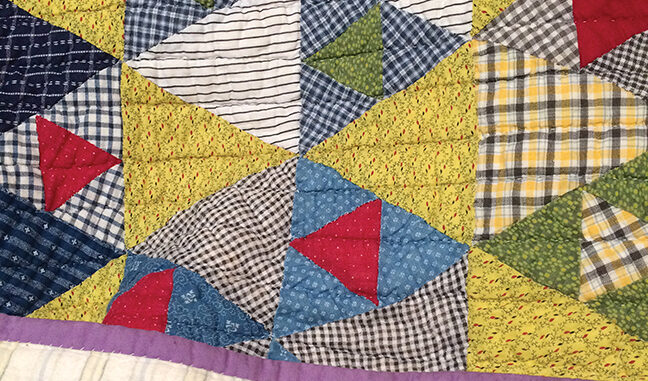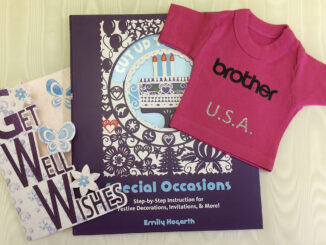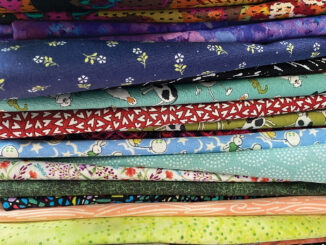
Many families have several old quilts that have been passed down through generations as beloved heirlooms. Other old quilts can be found at estate sales and resale shops, waiting for a new owner. These quilts should be used, loved and cared for to pass on to the next owners.
The first consideration when becoming the owner of an old quilt is whether or not to clean the quilt. For most old quilts, washing should be done very carefully. In many cases, soaking the quilt in the bathtub with a special quilt-washing detergent is the preferred method. The quilt soap package will give specific instructions on washing but generally soak the quilt, rinse and spread carefully to dry. For older quilts in fragile condition, this means spreading the quilt out flat to dry. Outside in the shade is a good place. Sheets can be placed on the ground to protect the quilt. Using the washing machine and dryer can cause a lot of damage to older quilts. Dry-cleaning is generally not recommended as the chemicals may damage the fabrics. Consulting a textile specialist is a good idea if you are not sure about washing the quilt. Check with a local museum or quilt group for more information.
Storing quilts properly will also prolong their life. Quilts should be stored in a “living” environment (not the attic or basement!). It’s best to store them wrapped in cotton sheets or in cotton pillowcases so the fabrics can breathe. Plastic is not recommended as long-term storage for antique quilts. Also avoid contact with wood and untreated paper as both have acids that affect the quilt fabrics. Quilts should also be taken out and refolded periodically to keep permanent creases from forming. Rolling the quilts for storage is also a good idea in preventing the creases. Also, store quilts in a dark closet. If you are displaying your quilts, make sure they are not the direct sunlight as this will damage the fabrics.
I am often asked about repairing old quilts. Some quilts are worth small repairs while other quilts may be so damaged that repurposing is a better use of them. Do realize that you will not be able to find exact fabric matches as fabric weave and dyes change over time. Also, the original fabric may have lost some of its original color. Tulle can often be stitched carefully in place over small rips or tears to prevent further damage. New bindings can be stitched over worn, existing bindings to help stabilize the quilt.
Dating old quilts can be challenging. A quilt is considered the age of the newest piece of fabric. A quilt could have been started with fabrics from one time period and then finished with fabrics made 20 years later. The quilt would be dated by the later time. Identifying the quilt pattern can also be tricky as many blocks and designs have several different names. Again, using a quilt specialist or checking with a museum that deals in quilts can help provide with you information. In Kentucky, The Kentucky Heritage Quilt Society will periodically hold Quilt Registry Clinics where quilts will be dated and patterns identified. These are listed in a statewide database for future reference. Visit www.khqs.org for more information.
Old quilts can be repurposed if the damage is too great on the quilt OR if you have no desire to keep the quilt intact. If the quilt has family ties, there are several great projects that you can make to share with family members. Consider making Christmas stockings for family members and include a label detailing the quilt’s history. Teddy Bears or other stuffed animals are another great way to recycle the quilt into a keepsake. You can also frame sections of the quilt to pass on to family members. If the quilt does not have any personal significance, then using the quilt for potholders, a table runner, placemats, clothing or other crafts may be the best use.
Of course, the main reason for keeping an old quilt is to enjoy it. Display your quilts and “love” them… that’s what the maker ultimately wanted!
-submitted by The Sewing & Vacuum Center





